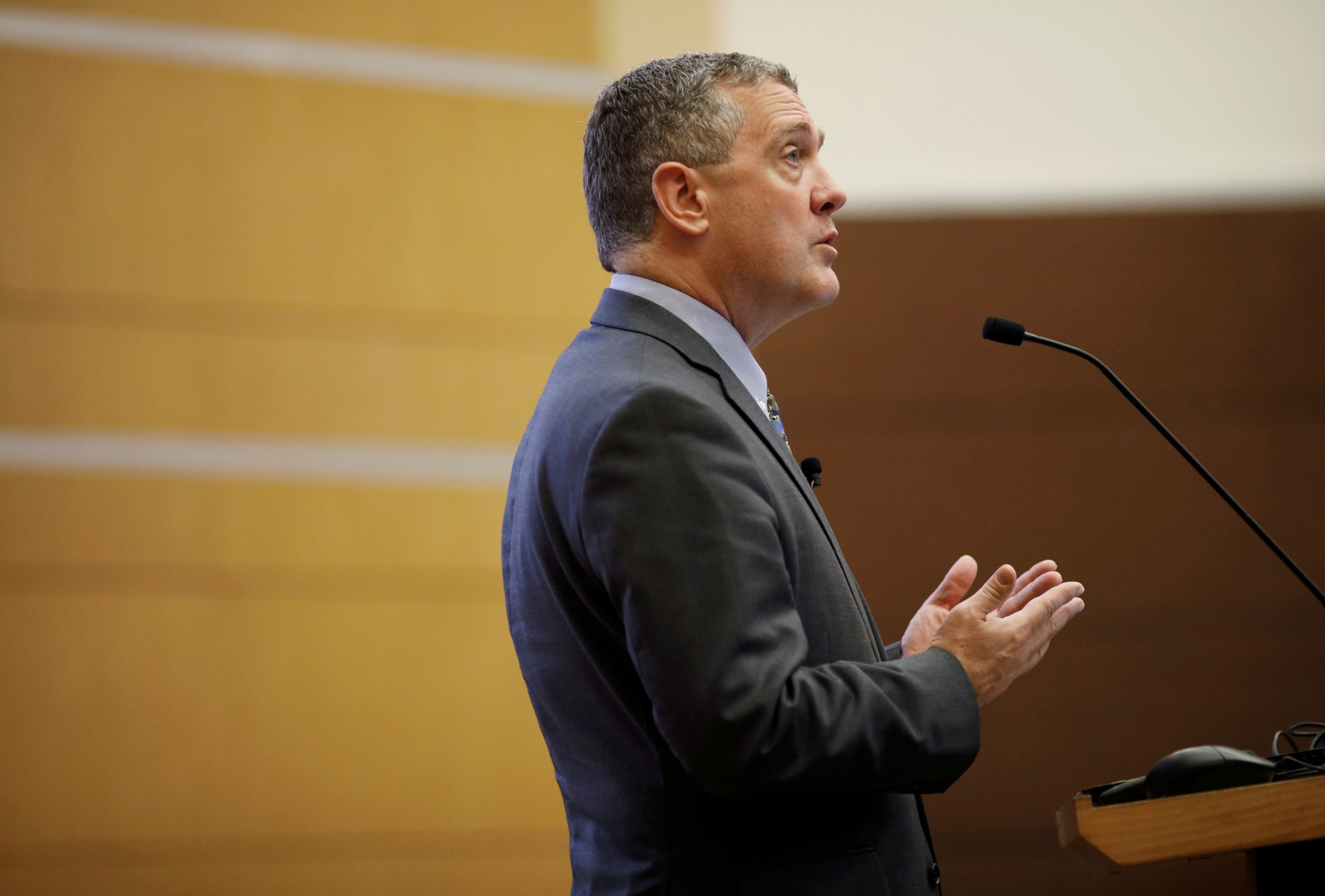
[elfsight_social_share_buttons id=”1″]
The Federal Reserve, fresh from its biggest interest rate hike in more than a quarter of a century, signaled on Friday that the rising risk of recession will not stop its battle to bring down searing inflation that’s punishing American households.
“The Committee’s commitment to restoring price stability – which is necessary for sustaining a strong labor market – is unconditional,” the Fed said in its twice-yearly monetary policy report to Congress, referring to the U.S. central bank’s rate-setting Federal Open Market Committee.
“We’re attacking inflation and we’re going to do all that we can to get it back down to a more normal level, which for us has got to be 2%,” Atlanta Fed President Raphael Bostic told American Public Media’s Marketplace radio program. “We’ll do whatever it takes to make that happen.”
Three weeks ago, Bostic cautioned against overly rapid rate hikes and said the Fed may need to pause tightening in September to assess the economy. On Friday he said he supported this week’s hefty rate increase, and that policy needs to be “more muscular.”
Inflation, measured by the Personal Consumption Expenditures Price Index, is running at more than three times the Fed’s 2% target. The central bank on Wednesday raised the range for its policy rate by 75 basis points to 1.50%-1.75% and published forecasts showing most policymakers support lifting borrowing costs further this year to perhaps 3.4%, and higher in 2023.
Economists say such sharp increases could spark a recession.
The report’s use of the word “unconditional,” and Bostic’s use of the “whatever it takes” phrase, suggest central bankers are willing to risk a downturn to avoid inflation getting out of control.
“We are with the American people, and trying to make sure that the pain that is experienced, and the discomfort, is as short lived as possible,” Bostic said.
Fed Chair Jerome Powell will update U.S. Congress members next week on the Fed’s plans to fight 40-year high inflation while pursuing maximum employment, its two sometimes conflicting jobs.
Critics say the Fed has acted too late on inflation. Investors have been unnerved: On Wall Street, the benchmark S&P 500 index fell 5.79% this week, its biggest weekly drop since March 2020.
Speaking in Barcelona on Friday, St. Louis Fed President James Bullard said he believes both the Fed and the European Central Bank “have considerable credibility, suggesting that a soft landing is feasible” on both continents.
He said that differed from the 1980s when Fed’s fight against high inflation under former Fed Chair Paul Volcker triggered two recessions.
“The Volcker disinflation was costly, but it was not credible initially – Volcker had to earn credibility,” said Bullard.
‘PRUDENT STRATEGY’
Minneapolis Fed President Neel Kashkari, in an essay published on the regional bank’s website Friday, said he supported this week’s rate decision and could support another similar-sized hike in July. But he added the Fed should be “cautious”.
“A prudent strategy might be, after the July meeting, to simply continue with 50-basis-point hikes until inflation is well on its way down to 2 percent,” Kashkari said.
Powell this week said policymakers in July will likely choose between a rate hike of a half point hike or 75 basis points again.
Traders in futures tied to the Fed’s policy rate are pricing in a year-end range of 3.5%- 3.75%, which equates to an average increase of 50 basis points at each of the year’s remaining four meetings.
Many factors driving inflation are beyond the Fed’s control, such as gummed-up global supply chains and Russia’s invasion of Ukraine which has boosted food and energy prices.
The U.S. labor market remains strong, with unemployment at 3.6%. Fed policymakers on Wednesday projected unemployment rising to 4.1% by 2024, as growth slows to 1.9% and inflation falls to 2.2%, a scenario Powell said would be hard to achieve but represents a “soft-ish” landing.
On Friday the New York Fed published results from an economic model showing chances of a hard landing – defined as one quarter over the next 10 where GDP shrinks by at least 1% – are about 80%. For more on what a recession is, see.
Kansas City Fed President Esther George, who dissented in this week’s policy decision, said on Friday she thought a bigger move added to policy uncertainty as the Fed was also beginning to shrink its massive balance sheet. Still, she said she shares the “strong commitment to bring down inflation to achieve our mandate for long-run price stability.”
Copyright 2022 Thomson/Reuters
